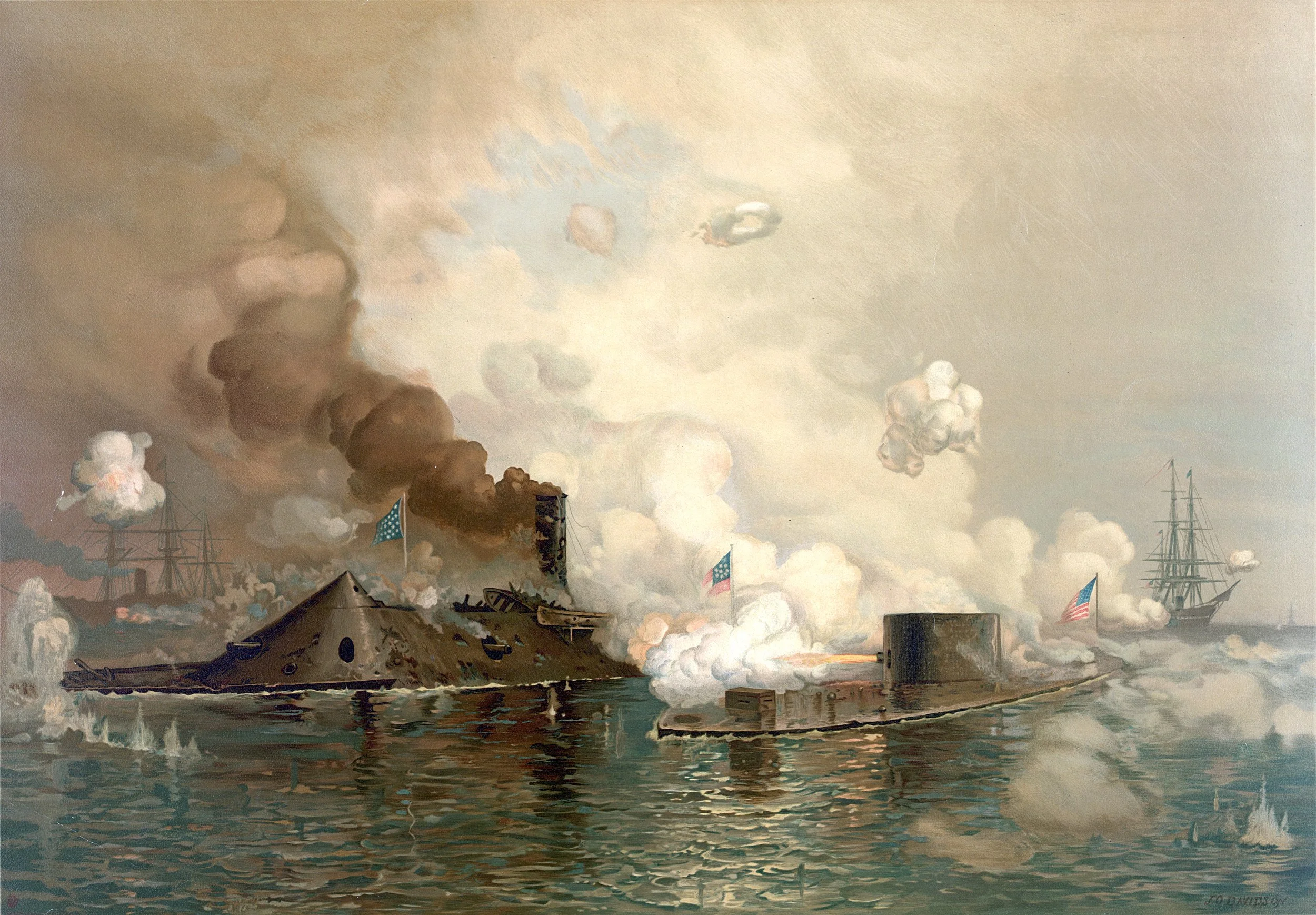The Last Monitor: USS Canonicus
USS Canonicus, the last surviving original monitor of the United States Navy, was photographed and filmed at the International Naval Review at the 1907 Jamestown Exhibition. She survived to this point only because the navy didn’t think she’d make a good target for gunnery practice, and no buyer had come forward when she was offered at auction for scrap - the last four other monitors finding buyers. While her fate hung in the balance, Congress decided that the upcoming Naval Review should have a Civil War-era monitor to illustrate the progress of naval construction. The Navy’s concerns about spending money on a rusting old hulk which might sink at any moment notwithstanding, Congress’s decree meant that the Canonicus would be sent to Hampton Roads were the prototype USS Monitor had faced CSS Virginia in battle.
Little more than a week after the novel USS Monitor successfully fought CSS Virginia in the Battle of Hampton Roads (March 8th, 1862), Congress ordered additional vessels of the type from Monitor’s inventor John Ericsson. The resulting ten ships, the Passaic class, represented an improvement of the type. Most notably, the pilot house was moved to a position atop the turret and a giant 15-Inch Dahlgren replaced one of the 11-Inch Dahlgrens in the turret. The Passaic class ships would be tested to their limits in battle against the forts Charleston.
Photo above: Passaic-class Monitor USS Catskill is seen at Charleston near the end of the Civil War. Note the pilot house, the muzzles of the 15-Inch Dahlgren and 11-Inch Dahlgren, and two Dahlgren Boat Howitzers (one of them a rifle). Captured Confederate projectiles may also be seen: three from 6.4-Inch or 7-Inch rifles and one from the giant 12.75-Inch Blakely Rifle.
The nine vessels of the Canonicus-class incorporated yet more improvements over the Passaics - especially as their construction was delayed to incorporate the hard-one lessons of combat. The Canonicus-class monitors had more powerful engines and a larger propellor. Their turrets mounted two of the 15-Inch Dahlgrens. They had improved ventilators. Considering how much low speed and poor ventilation had hampered operations and habitability off the Passaic-class ships at Charleston in 1863, these improvements were significant.
USS Canonicus, name ship of the class, commissioned at Boston in April of 1864 and was sent to the James River in Virginia.
Photo above: USS Canonicus and auxiliary vessels on the James River in 1864-1865. Library of Congress.
On June 21st, 1864, the US Navy squadron on the James River observed a new Confederate Battery at Howlett’s Barn near Trent’s Reach. USS Canonicus as well as USS Tecumseh, USS Saugus (both Canonicus-class monitors), and USS Onondaga (a double turreted monitor) opened fire on the battery. The Confederate work, Battery Dantzler, was armed with a 10-Inch smoothbore, a heavy rifle, and two smaller guns. (1865 Photos of Battery Dantzler show what appears to be a 7-Inch Brooke Rifle and a 10-Inch Columbiad.) The Confederate squadron upriver of Trent’s Reach including the ironclads CSS Virginia II and CSS Fredericksburg soon opened fire at extreme range on the US Navy ships - though the fire of the Confederate gunboats was ineffective as they were firing without having their targets under direct observation.
US Navy Ironclads on the James River in 1864-1865 including USS Saugus (nearest) with two other monitors astern (monitor in center in distance is possibly Canonicus). USS Atlanta and USS Onondaga are the last two at left.
USS Canonicus’s captain, Commander Enoch Greenleafe Parrott, reported of the action:
SIR: On the 21st instant, near noon, the rebels unmasked near Howlett's a battery of four guns, whose completion we had been for some time endeavoring to prevent or retard by occasional shots, and opened a fire upon us and the vessels in our vicinity, which was kept up until dark. They had a large smoothbore, a large rifle, and two smaller guns. As soon as they commenced unmasking, we opened on them with our two XV-inch guns, firing rapidly at first, but afterwards only occasionally, to economize ammunition.
One of their guns was dismounted by a shell from the ironclads, and another shell was seen to traverse an embrasure, but the distance, 2,200 yards, was large for firing at single guns. We were struck twice. The effect of these shot is described in the accompanying report of Chief Engineer Macomb. The injury is slight.
We fired forty shells with 35-pound charges. Everything stood well about the guns and gun carriages. The rebel ironclads came down ther iver, but not in sight, and opened upon us a random fire, over the trees, which hit nothing, and which, I believe, was not noticed. The batteries have since continued silent and their guns are again masked.
I am, respectfully, your obedient servant,
Acting Rear-Admiral S. P. LEE,
E. G. PARROTT,
Above photos show a 7-Inch Brooke Rifle (left) and a 10-Inch Columbiad (right) both photographed at Battery Dantzler in 1865. Except for a small number of heavier Brookes, these two types were the best Confederate industry could produce for defense against monitors.


